Montblanc 1858 Split Second Chronograph
At last year’s SIHH Montblanc presented the 1858 Split Second Chronograph, providing a complication that is also known as a “Rattrapante”. This watch comes in a vintage design and with a movement in a typical traditional layout. The finishing of this movement is breathtaking. The actual sensation about this watch is its price.
If you lurk around watch forums you frequently read about “grail watches” or even “exit watches”. Some unfortunate watch addicts try to make you believe that if they were able to obtain that one specific (and only) watch, they would be happy for the rest of their life without needing any other watch. Unfortunately, the nature of addiction is a different one. You know what I mean. If there is a watch on your mind that you cannot possibly afford, but which you cannot forget either, it can only become a dream. But, sometimes dreams come true.
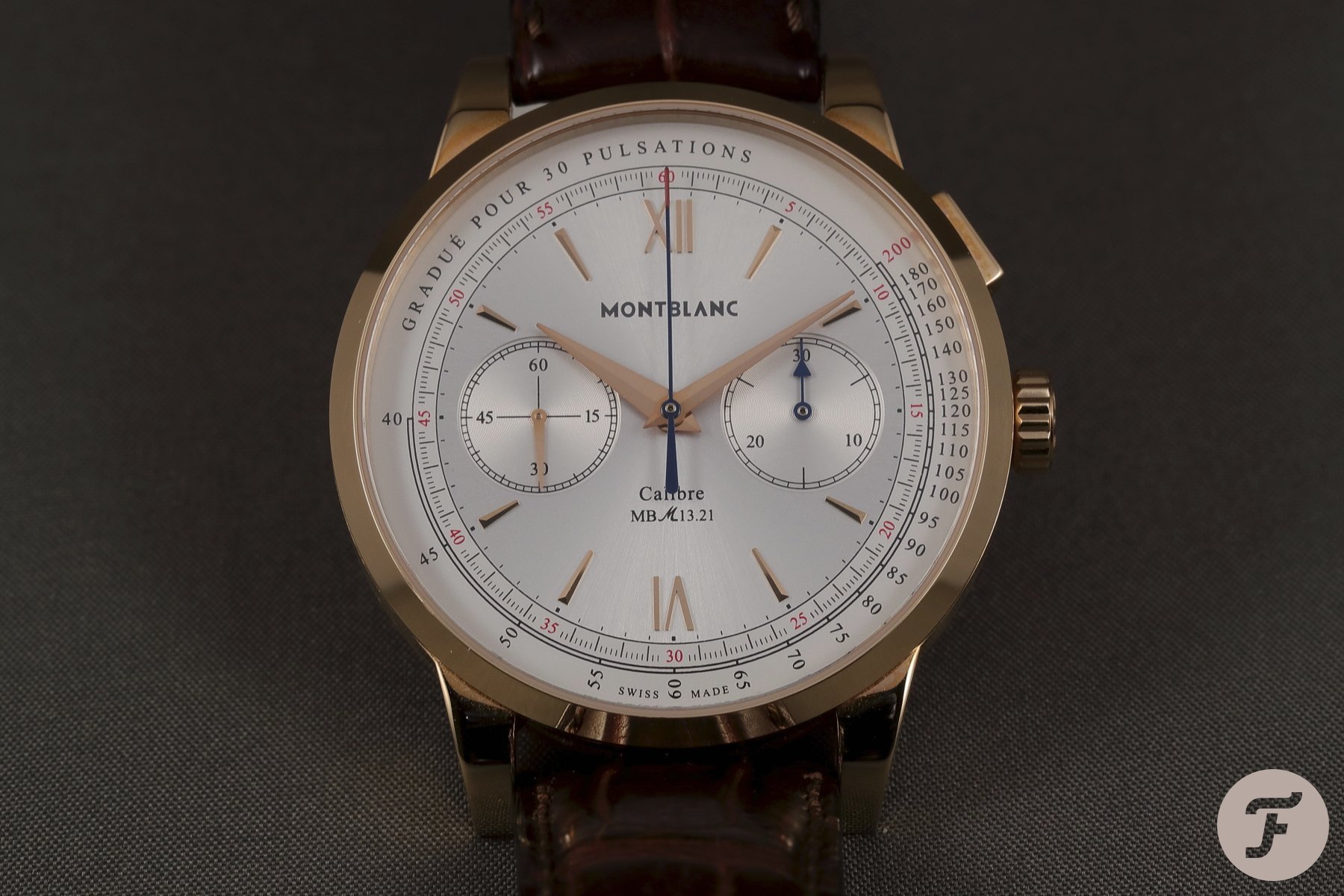
Complicated, three-dimensional movements
When you own more than one watch, you already own a collection. This turns you into a collector. When the watch virus infects you and your collection is about to grow the question for an appropriate extension arises. You could fall in love with a particular brand. You could collect a select type of watch. Or you could make watches of a specific era become the theme of your collection.
For me, watchmaking is about the invention, the design, the construction, and the finishing of movements and their functionalities, the so-called complications. Tool watches with simple time-only movements, eventually providing a date, are great fun for me. But, what thrills me, are watches with complicated, three-dimensional movements in high-end finishing.
A tourbillon offers a nice animation, but, as long as it is not a two-axis 3D tourbillon, it is not overly complicated. A perpetual calendar contains a lot of different gears but does not necessarily feature considerable depth. A minute repeater is the pinnacle of complications (apart from Grand Complications which combine several complications in an integrated movement). But here we are entering a price range that is unattainable for most of us. The complication that is offering all that makes a watch aficionado sigh and that sometimes becomes affordable is a chronograph.
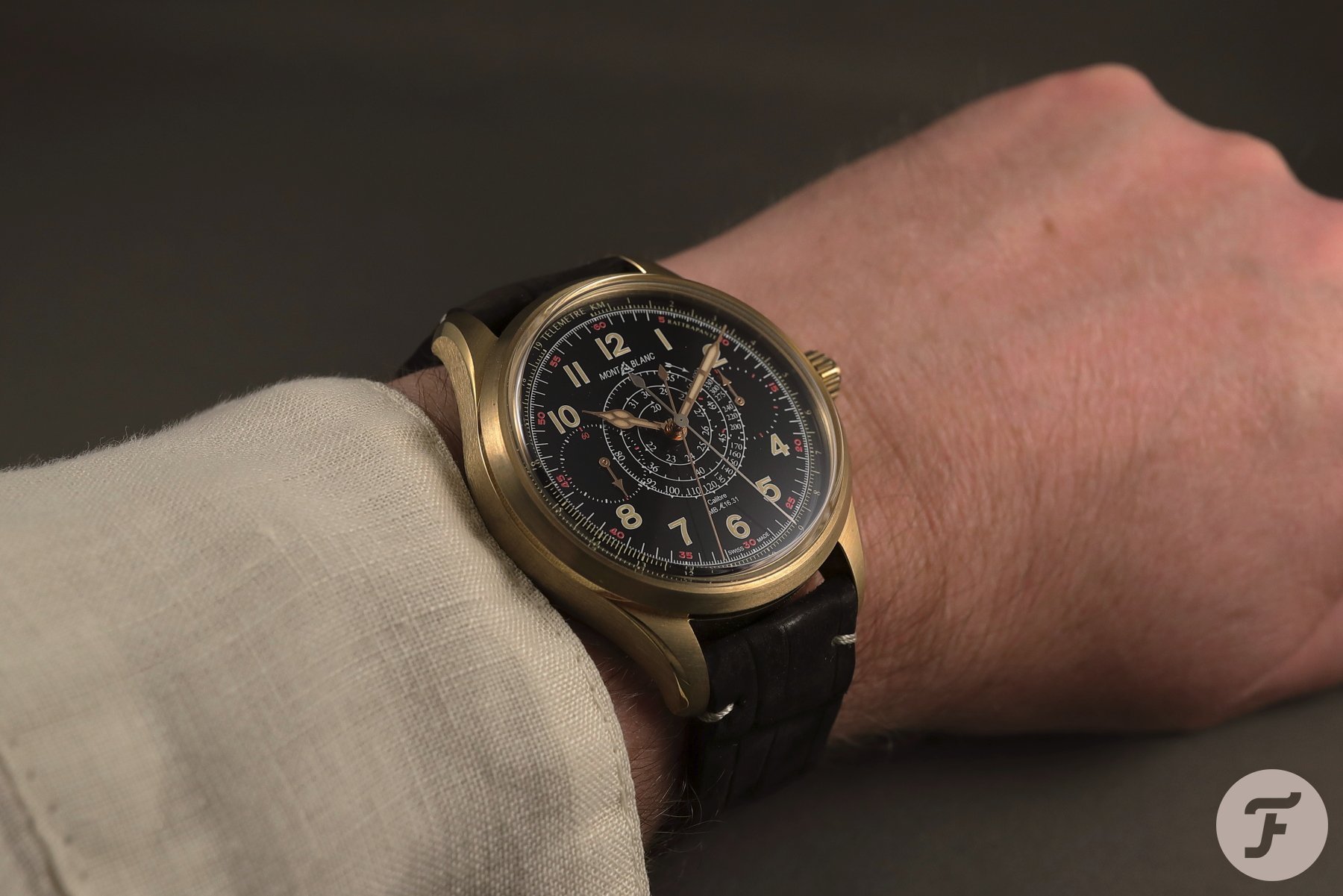
The Minerva heritage
When the Richemont Group acquired the Minerva factory, located in Villeret, in 2006, they added a watchmaking crown jewel to their portfolio that still is mostly underestimated. The building that now carries the name “Institut Minerva de Recherche en Haute Horlogerie,” is actually a watchmaking museum where watches are still produced like they were a hundred years ago.
Okay, on the ground floor they have added two CNC machines and one wire erosion machine next to the big old stamping machines to manufacture the raw parts of movements. And now there is a room filled with graphic workstations on which today’s watchmakers design their movements. But the rest are remains from a distant past. The old traditional watchmaking tools populating the workshops are a treasure on their own. Only a few watchmakers still know how to use them. They belong to a small guild of preservers of a craft that has almost been forgotten.
Hand finishing actually means finishing by hand
There are big watchmaking desks filled with hundreds of caliber components that form the current project of one watchmaker. When the next part is chosen to receive its finish you can watch the watchmaker take it to one of those old tools. There he places that miniature movement part into the machine to prepare it in a way that is so utterly different from the practice of most other brands.
Hand finishing actually means finishing by hand and not what some other brands try to make you believe it is. Every part of a movement receives a high-end finishing. This includes parts and surfaces of parts that nobody, other than the watchmakers assembling these movements, will ever see. Even the insides of barrels receive a Perlage (circular graining). At Minerva, you can still see watchmakers performing their craft wearing loupes on their heads and assembling movements in a way that in other places is just portrayed as a marketing feature.
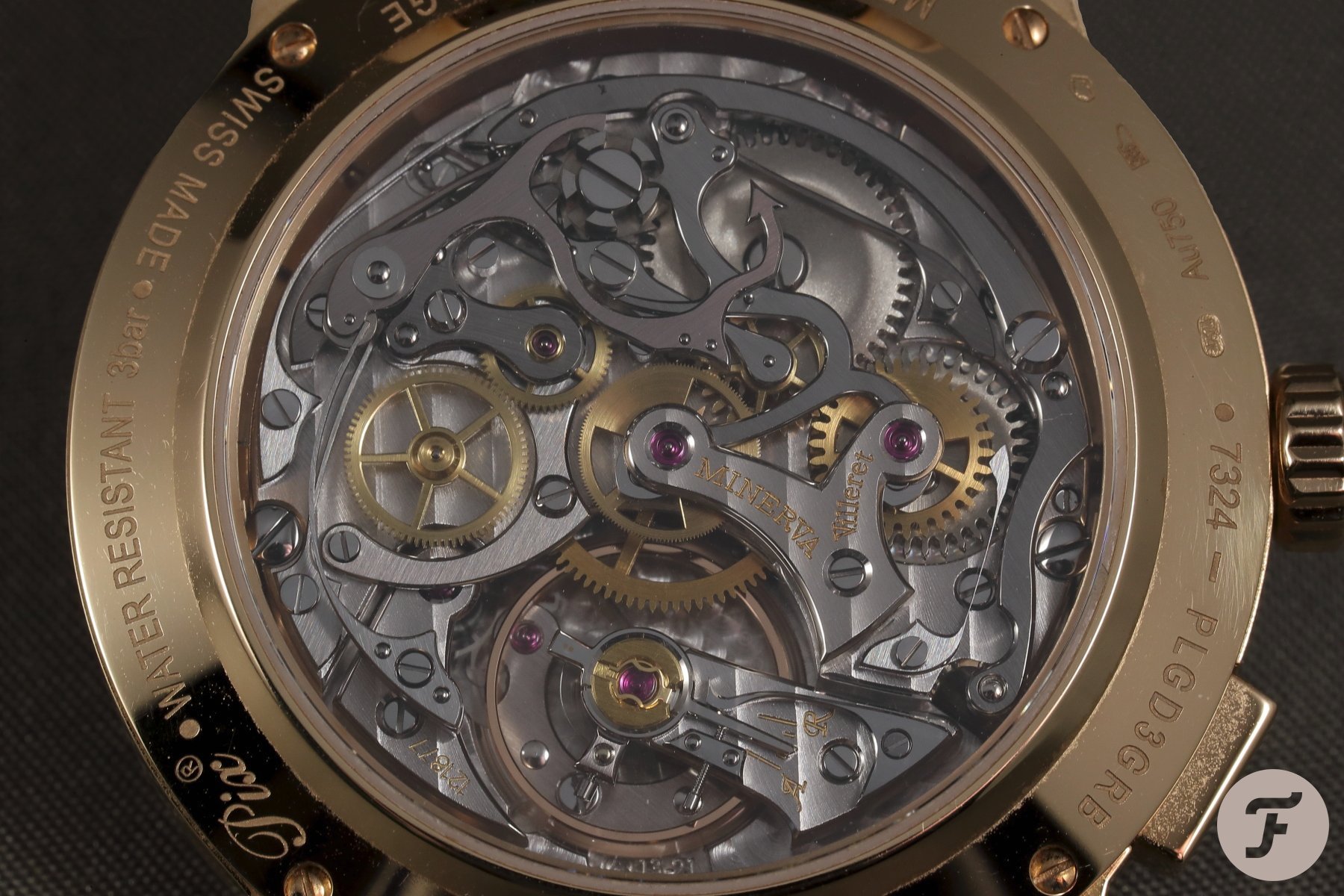
The Minerva factory
The Minerva factory, which is what you can genuinely call a manufacture by the way, even produces hairsprings, which are the parts that control the accuracy of a watch movement. The majority of hairsprings on this planet are produced by Nivarox FAR, which is part of the Swatch Group. Only a few other brands possess the capability to produce this part, without which a mechanical watch cannot function.
Major watch brands recently have started to replace traditional hairsprings by hairsprings made of silicon, which shows that even for these brands the production of conventional hairsprings is a challenge. Minerva produces its hairsprings by a method that is rather a craft than industrial manufacturing. These hairsprings work exact and reliable (they do!), but this way of producing this central watch part is one of the reasons that limit Minerva’s production capability to a few hundred movements per year. This explains why watches with Minerva movements are rare.
Outstandingly reliable chronographs
Almost a hundred years ago Minerva was famous for producing outstandingly reliable chronographs. In the form of pocket and wristwatches, these chronographs created the reputation of this brand whose name today makes knowledgeable collectors raise an eyebrow. My first intimate contact with a Minerva chronograph movement was SIHH 2014. Montblanc, where Jérôme Lambert just had taken the lead, presented the first true collaboration of the Montblanc watchmaking sites in Le Locle (Montblanc’s more modern watchmaking facility) and Villeret (Minerva) resulting in the Meisterstück Heritage Pulsograph.
I had set my mind to owning a high-end classical chronograph a while before, and then Montblanc was offering exactly this for an extremely competitive price. I had to have this watch, which contains the outstanding M13.21 movement.
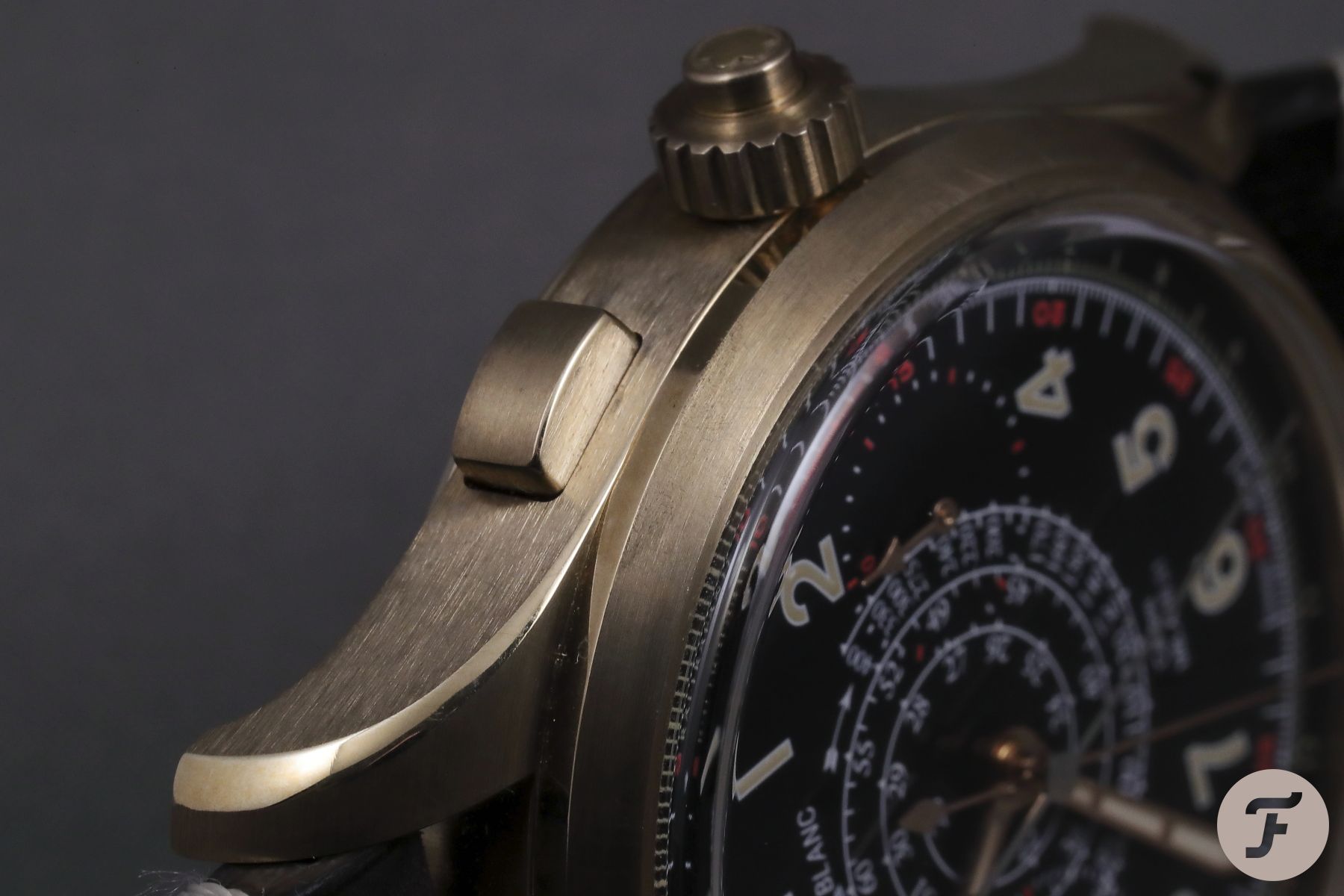
What is more than a chronograph?
So, this milestone in my watch collecting history I had set already. As I have described in the introductory section of this article, a watch addiction requests for extending a collection by not only more but also more special watches. The enhancement of a chronograph is a split-second chronograph or Rattrapante.
Not many Rattrapantes have been presented in the recent past. From time to time IWC introduces a new version of its Portugieser Rattrapante including a movement that is derived from the ETA 7750 movement. That movement is a development of Richard Habring, who worked for IWC in the past. He is now offering an evolved version of this solution in watches of the brand which he operates together with his wife Maria, Habring2.
These 7750-based Rattrapantes are in fact accessible (from the weird perspective of a true watch nerd). In contrary to this, the true classic Rattrapantes are not. I remember offerings from Patek Philippe and Vacheron Constantin that both cost around 250,000. Yes, I did ponder on ways to scrape that amount of money together. Fortunately, I realized that there are more important things in my life than owning one of these watches.
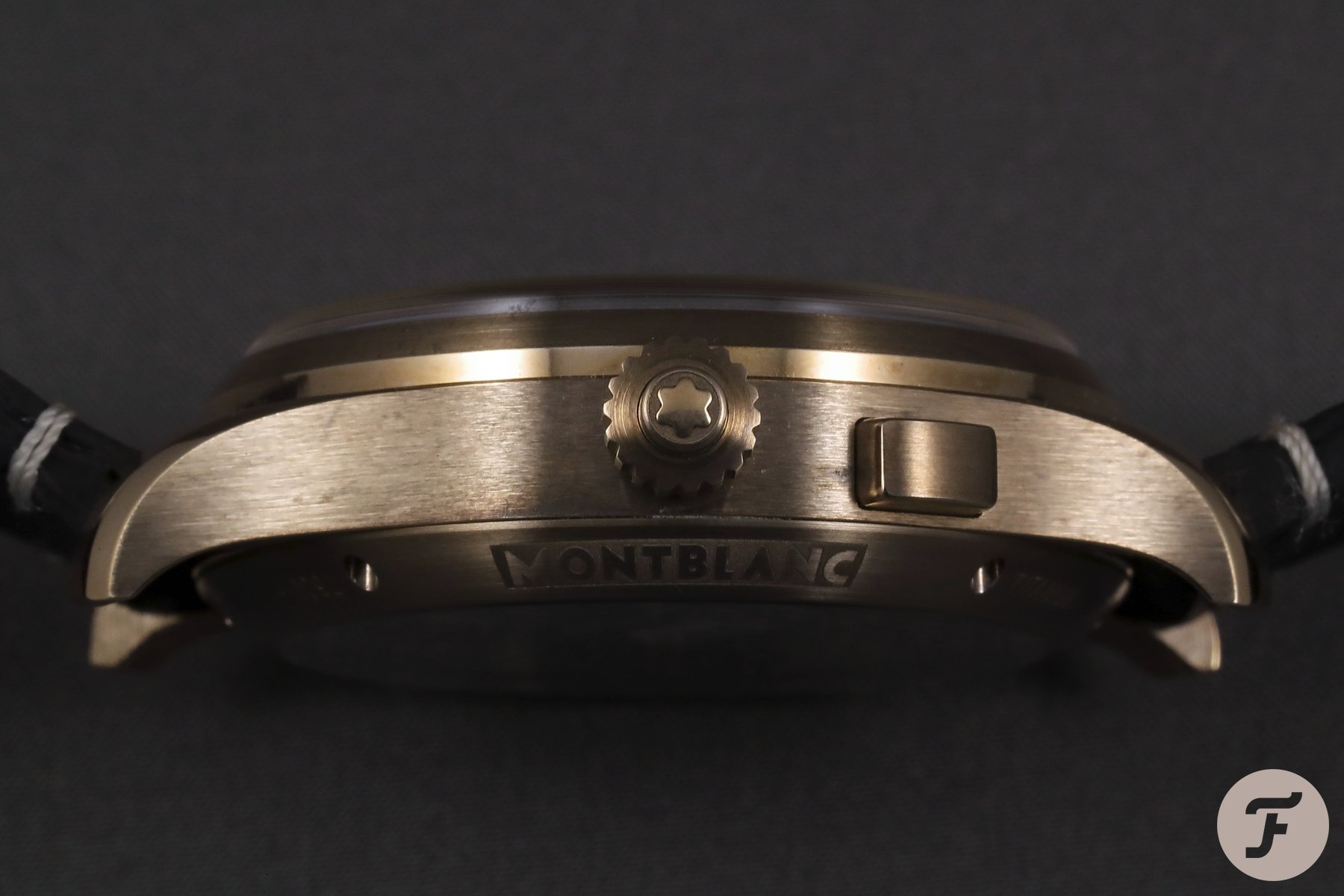
Split-minute functionality
But that idea — this dream — of owning a Rattrapante nested in my mind. Therefore I was excited when Sinn presented their 910 Jubiläum in 2016 to celebrate their 55th anniversary. This watch contains a movement from La Joux-Perret. Remarkably, a modified 7750. The addition of split-minute functionality and a column wheel made it rather special.
That column-wheel extends Richard Habring’s design idea by this traditional control mechanism for a chronograph, which today is considered a high-end solution. The movement also exhibits an impressive finishing for a 7750. Even though this watch is limited to 300 pieces and the price is (only) 5,500 Euros, there still seem to be some pieces left. I had my Rattrapante! This topic lost prominence and took a back seat.
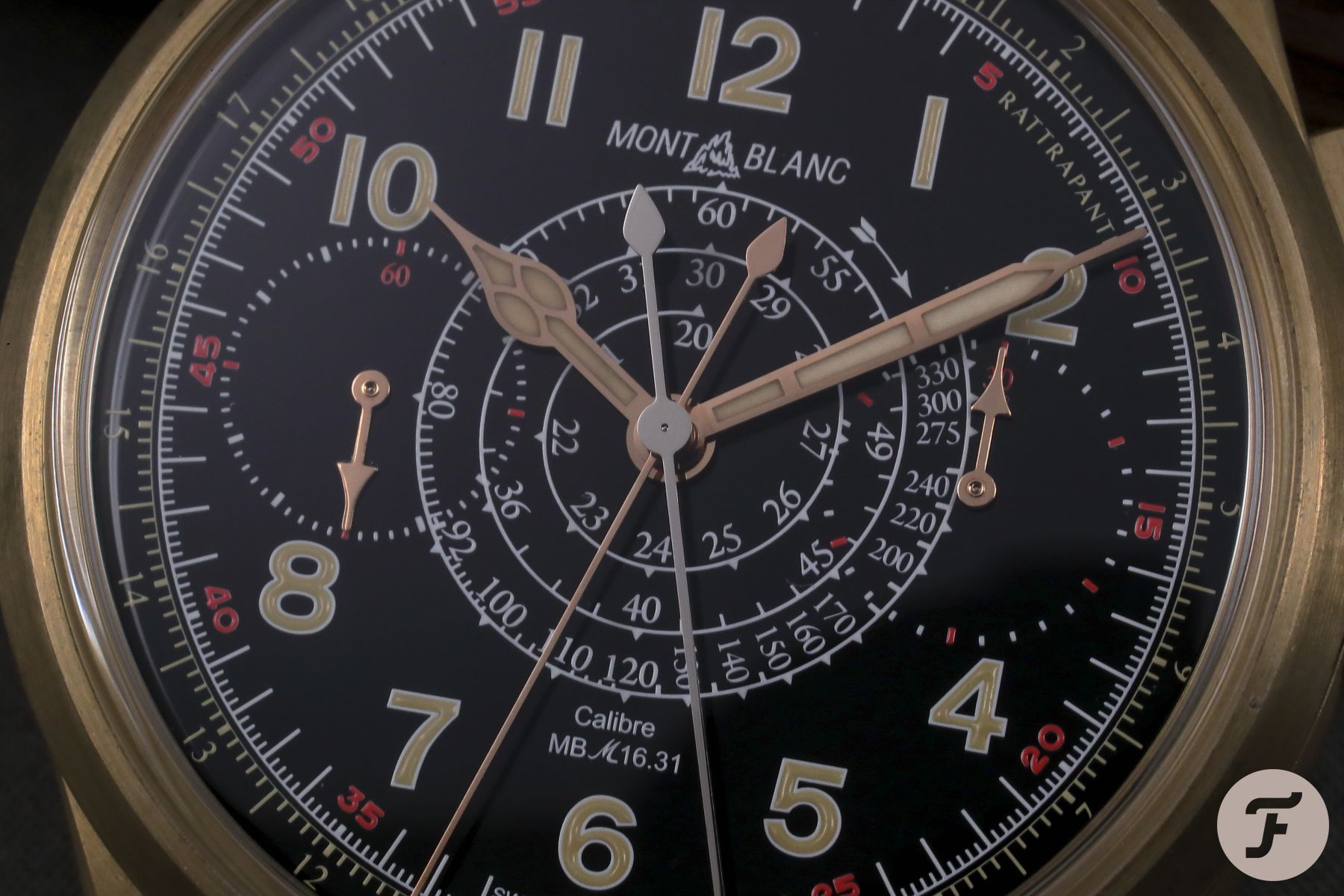
Montblanc 1858 Split Second Chronograph
I had not attended SIHH 2019. I had followed the coverage of the novelties presented there on all available channels. Two other new watch models captured my attention, being possible must-haves. Only when that event was already over, reports of the Montblanc 1858 Split Second Chronograph appeared.
I recognized the movement from a former model of the Montblanc Villeret collection, named Exo Tourbillon Rattrapante. It was the same movement as used in that grand complication, except the tourbillon (and a day-night indication). While the Exo Tourbillon had cost (the usual) 250,000, this new pure Rattrapante should cost a bit more than 30,000. A lot of money! But a fraction of the usual price for something like this. I had to sleep about this for a night, and I ordered it the next business day.
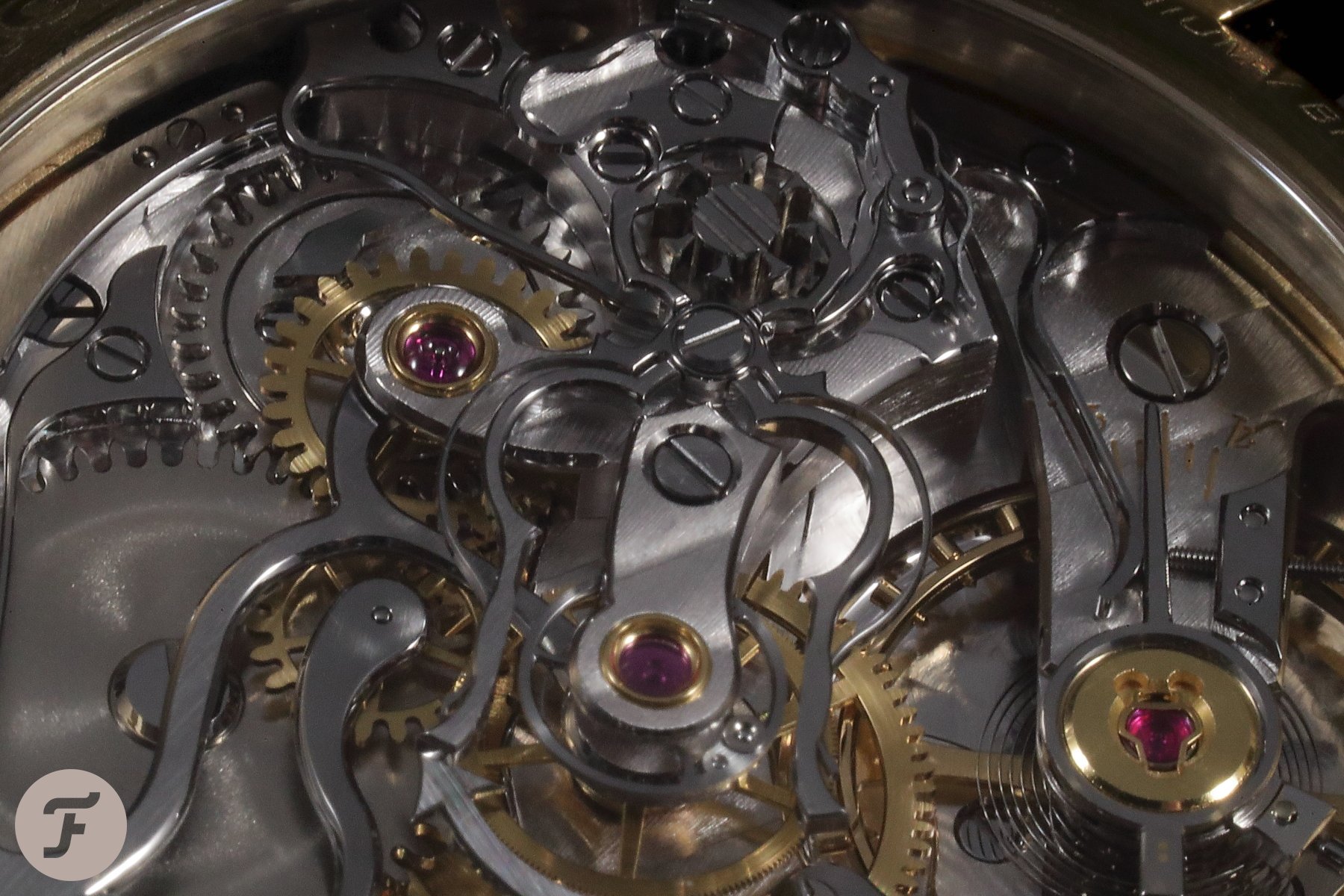
On the wrist
It should have become clear at this point that this watch is about the movement. But when you wear it, there are only minor hints of that movement. Therefore let’s start to explore this watch at its overall visual appearance.
This watch is big. 44mm does not sound extreme, and, as this eventually is a tool watch, definitely aren’t. But this watch looks and feels big. Also, the thickness of about 15mm is substantial. Well, if you want a pocket watch movement, you’ll need to accept pocket watch dimensions. But the diameter and height of the case are well balanced, and this watch fits better under the cuffs of my shirts than some other watches. The black dial should let the watch appear smaller, but I guess the contrast to the bronze case and the sturdy bezel create this impression.
A warm and mild hue
The visuals are borrowed from a 1930s Minerva chronograph. Hour indexes in the form of numerals and cathedral hour and minute hands dominate the dial. All these are filled with beige-colored luminous material that glows green in the dark. The beige indications provide a good contrast to the black background while preserving a warm and mild hue across the front of the watch.
White is reserved for detailed tachymeter and minute scales to enhance readability. A telemeter scale at the outer margin of the dial is colored beige again to differentiate it from the minute scale. All hands are plated with rose gold to approach the tone of the case. A few small red accents enrich the color palette but only make an appearance when you look at the watch from a short distance. The visual impact of the subdials for small seconds and chronograph minute counter is reduced to the minimum. Altogether the dial offers many interesting details without being cluttered.
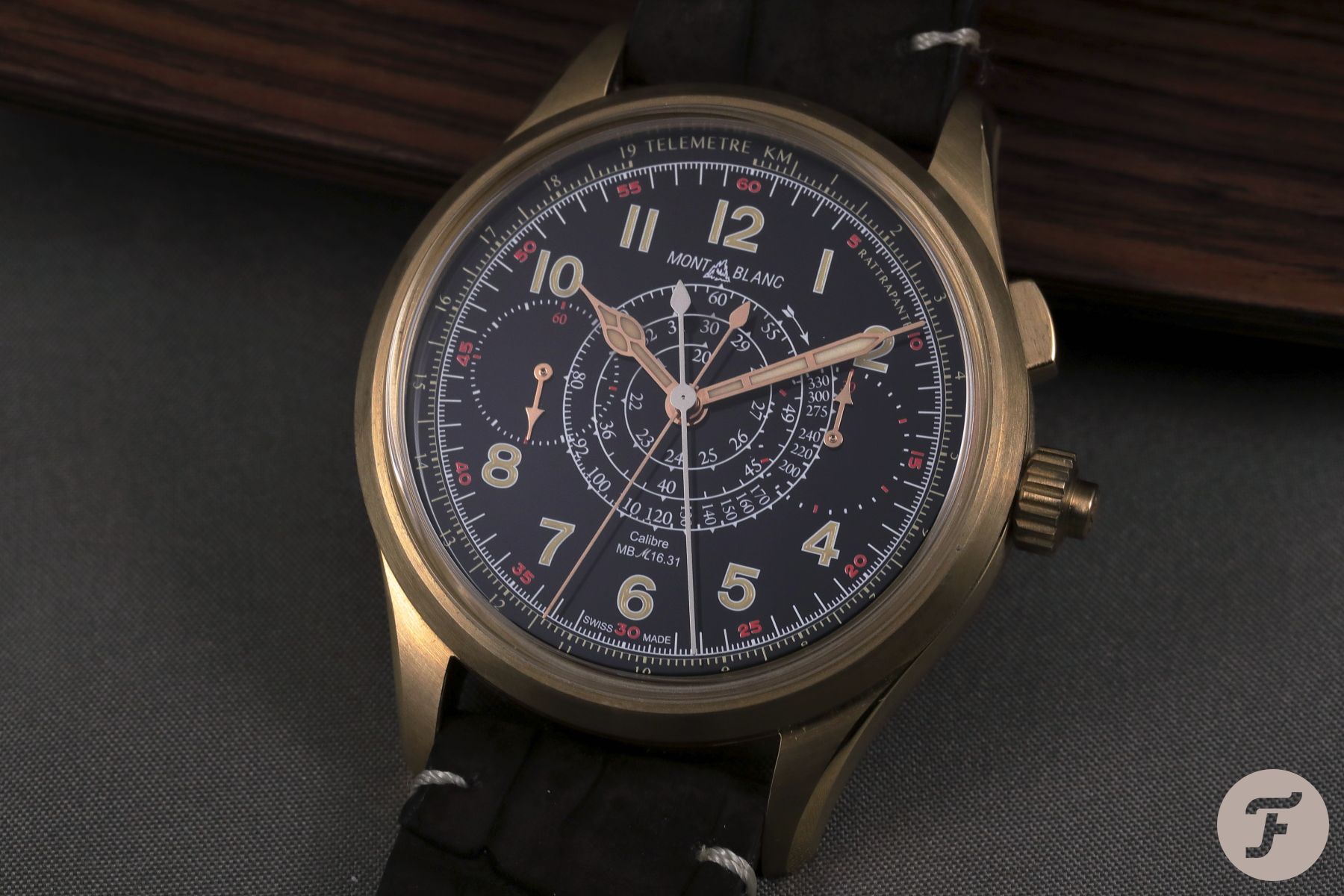
The patina
The case surface is almost entirely brushed, creating a soft impression. Few polished edges accentuate the shape and give a hint that this is a true luxury timepiece. During the four months for which I’ve owned this watch, I only noticed a minimal alteration of the bronze. The patina that developed is very light. On the case back, the text “TITANIUM / BRONZE” is engraved to inform that the case back is made of titanium. To match the color of the other parts of the case a bronze-colored PVD coating has been applied to this titanium case back.
The watch comes on a black crocodile strap which is manufactured in Montblanc’s Pelletteria in Florence, Italy. It is a premium-quality product, and the fact that it is made by Montblanc makes it an even more appropriate accessory to this watch. But I don’t like it very much at this watch. First of all, I prefer brown straps as I’m wearing brown shoes and wear brown belts.
This watch, even though it has a black dial, with its warm tone bronze case, in my opinion, also screams for a brown strap. What annoys me most on the original strap is a strongly contrasting beige stitching all along its edges. I have replaced it with a Caiman suede strap in brown with minimal stitching. The suede surface of this strap, for me, better matches this robust watch. That it is Caiman leather preserves the luxury which is appropriate to the price level of this watch. A bronze pin buckle carrying a bold branding rounds the strap off.
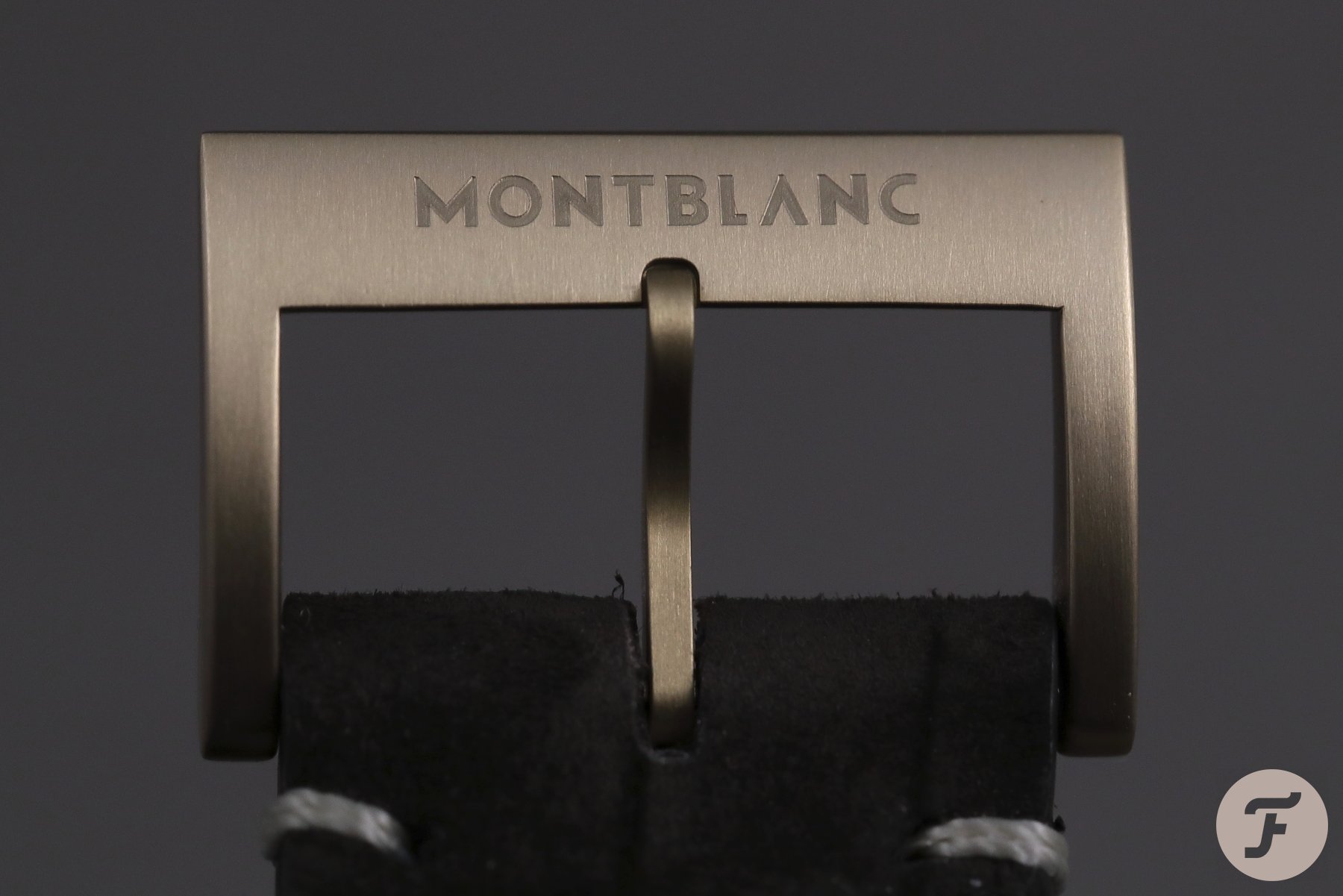
Function
This is a mono-pusher chronograph. A single, crown-integrated pusher operates the start, stop, and reset functions of the chronograph mechanism. As long as you only use this pusher, you will not notice that you’re facing a split-second chronograph. On the first press of that pusher, the central (silver-colored) second counter will start to move clockwise.
When it completes a rotation after 60 seconds, the small minute counter at 3 o’clock will jump to the next minute index. This counter is not advancing continuously but instantaneously after each minute has passed so the indication is always clear. This minute counter completes one rotation after 30 measured minutes and then starts again at zero, offering a maximum measuring duration of 30 minutes. A second press of the pusher in the crown will stop the movement of the hands of the second and minute counters. A third press will reset these two hands to their zero position.
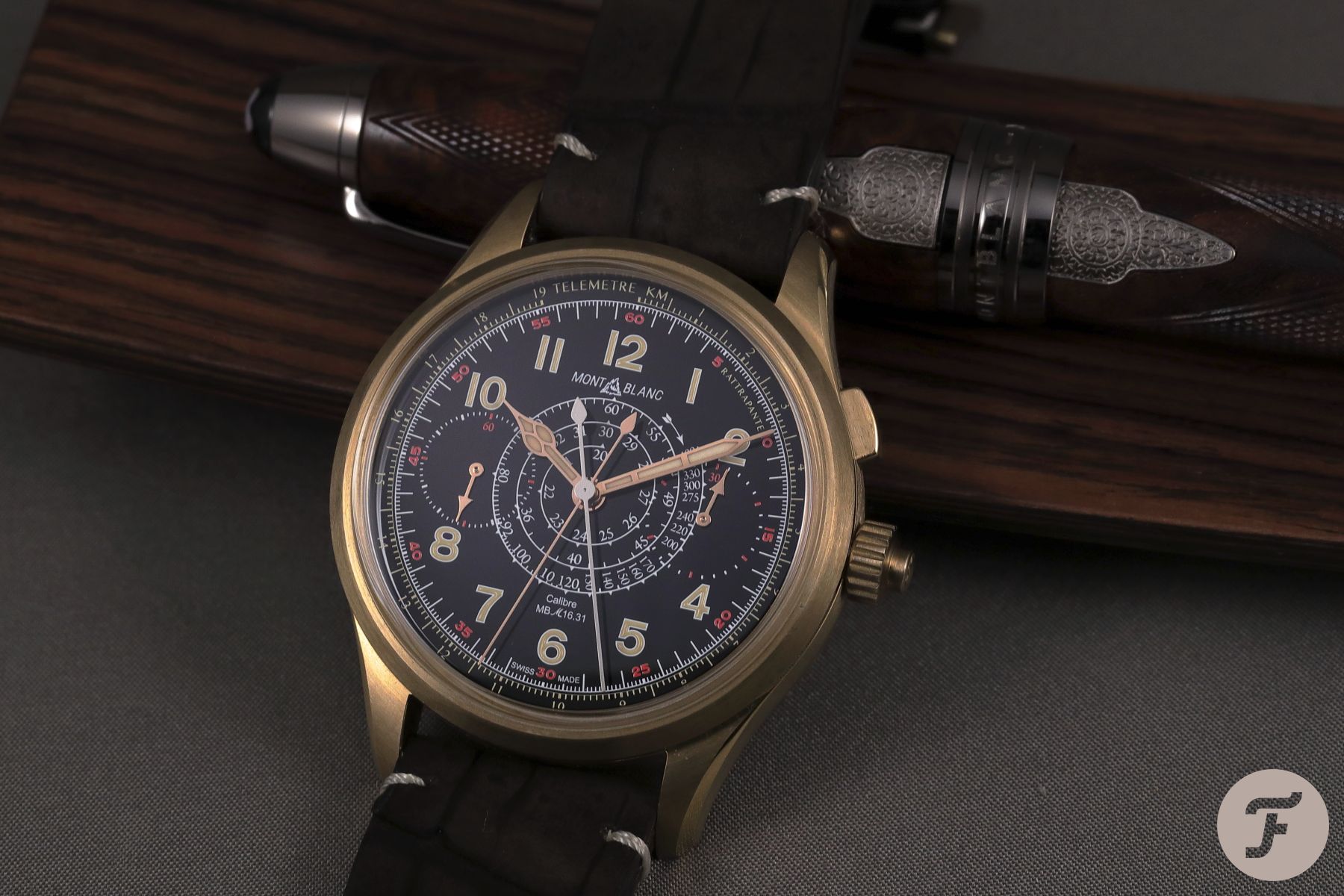
Split-second functionality
The pusher at the two o’clock position controls the split-second functionality. As long as the chronograph is not running, pressing this pusher has no functional effect. But beneath the white chronograph seconds hand, there is a second (golden) hand for tracking split-seconds. Set the chronograph running. Press the 2 o’clock pusher. Suddenly, the second seconds hand pops into view and takes over. The white hand stops dead. The golden hand continues its merry journey around the dial.
The activation of the split-second function stops the movement of the primary second counter while the additional hand, which was hidden before, keeps moving on. The use of this function is the ability to read exactly when you pressed the split-second pusher allowing you to measure intermediate time intervals. After you read that intermediate time, you press the split-second pusher once more, causing the primary second counter to immediately jump above the additional hand to follow it synchronously again. This behavior of the split second hand to catch up with the main chronograph hand has given this complication its original name “Rattrapante” as the French word rattraper means “to catch up”.
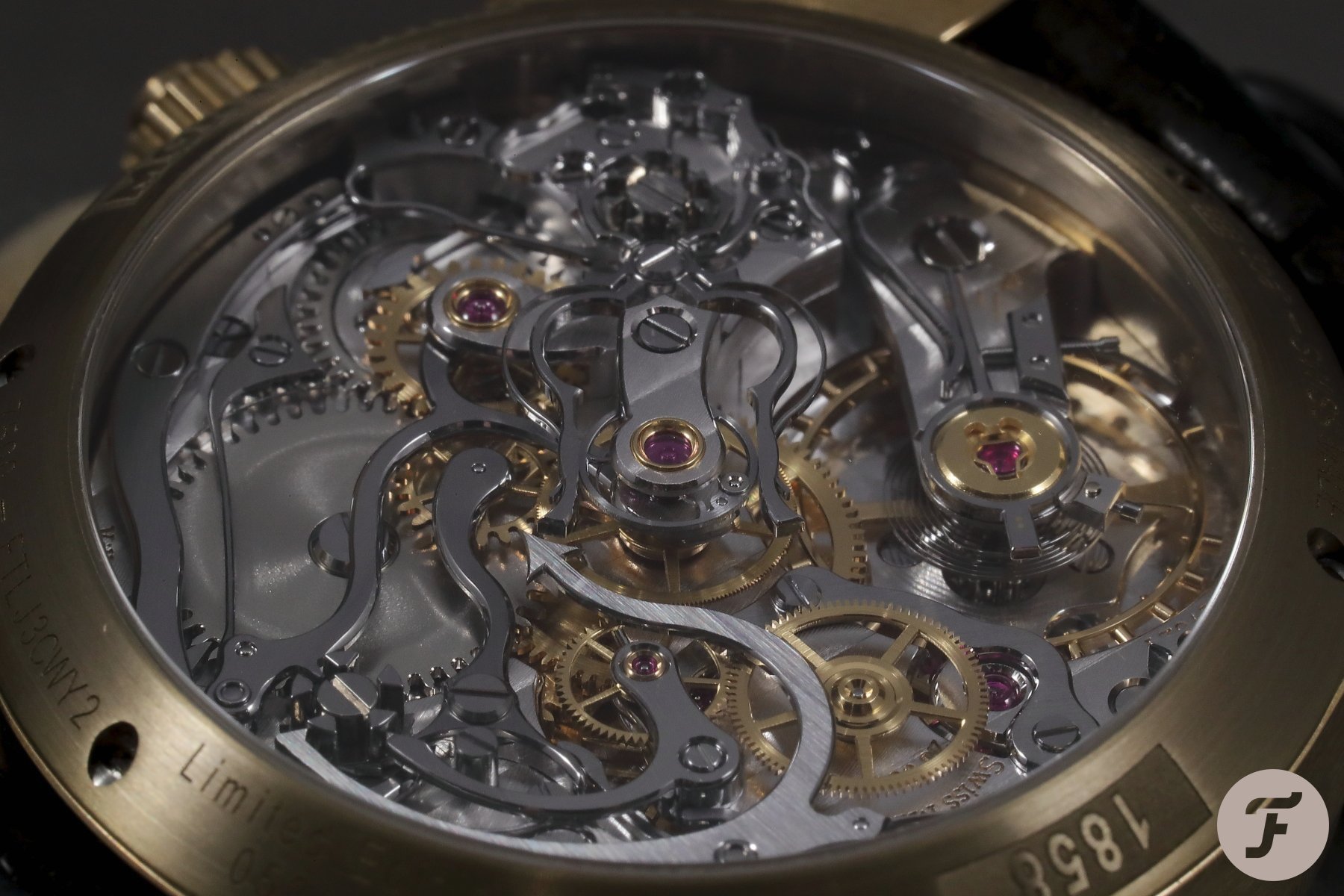
Why the fuss?
That’s it! So, why the fuss? While this function is simple to operate, it is just as complicated to make it work reliably and effectively. The challenge? To preserve the accuracy of the chronograph’s elapsed time measurement and the accuracy of the movement’s general time measurement. Making the split-second hand literally jump to the position of the primary chronograph hand involves considerable force. After having caught up with the primary chronograph hand, the split-second hand’s powerful movement needs to be stopped almost completely, resulting in a synchronized movement of both hands.
A complex animation
This immediate braking of that hand’s powerful swing may not influence the accuracy of the movement of the elapsed time measurement. As you will see in the next section on the movement of this watch, the pausing of the split-second hand’s movement is realized by a delicate mechanism in the shape of a miniature pincer which is grabbing and holding the wheel that moves the split-second hand. A tiny column wheel controls the operation of this powerful miniature pincer. The whole mechanism needs to be adjusted most precisely to work properly.
The split-second function in its entirety is a complex animation on a watch’s dial that is under complete control of the wearer. This is pure watchmaking magic at your fingertips.
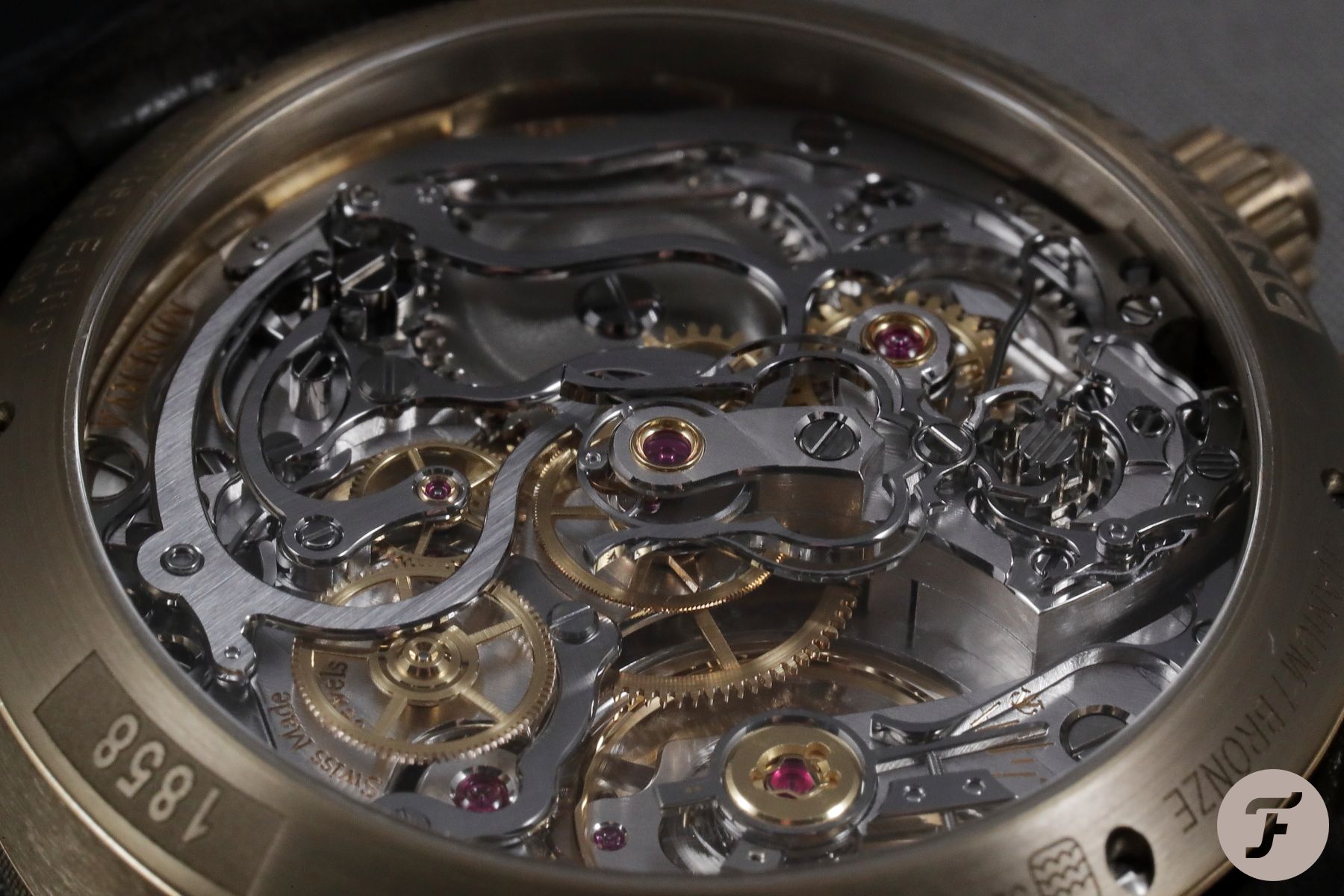
An oddity
In my description of the split-second function, you may have noticed an oddity. When you start the chronograph, the silver second counter starts to move (with the golden split-second counter following invisibly underneath). When you press the split-second pusher, this silver hand stops and the golden hand below it continues the movement. This way the two second-counting hands swap their roles.
First, the silver hand marks the normal chronograph function, and then the golden hand takes over until you press the split-second pusher again. I can live with that as there is one moving and one stopped hand, but functionally it doesn’t make sense. It is normally the other way around. Whether this mode of operation is historically inspired is unknown. If I ever get the chance to mine Minerva’s archives, I will endeavor to find out.
If you look at the side of the watch you will see that the crown and the split-second pusher are not aligned. Normally, this suggests a modular movement. Although there are some good examples out there, many consider modular chronographs as exclusively inferior to their integrated counterparts. But this is not the case here. The movement in the Montblanc 1858 Split Second Chronograph is not only integrated but also exquisitely finished. Welcome to yet another exception to yet another rule.
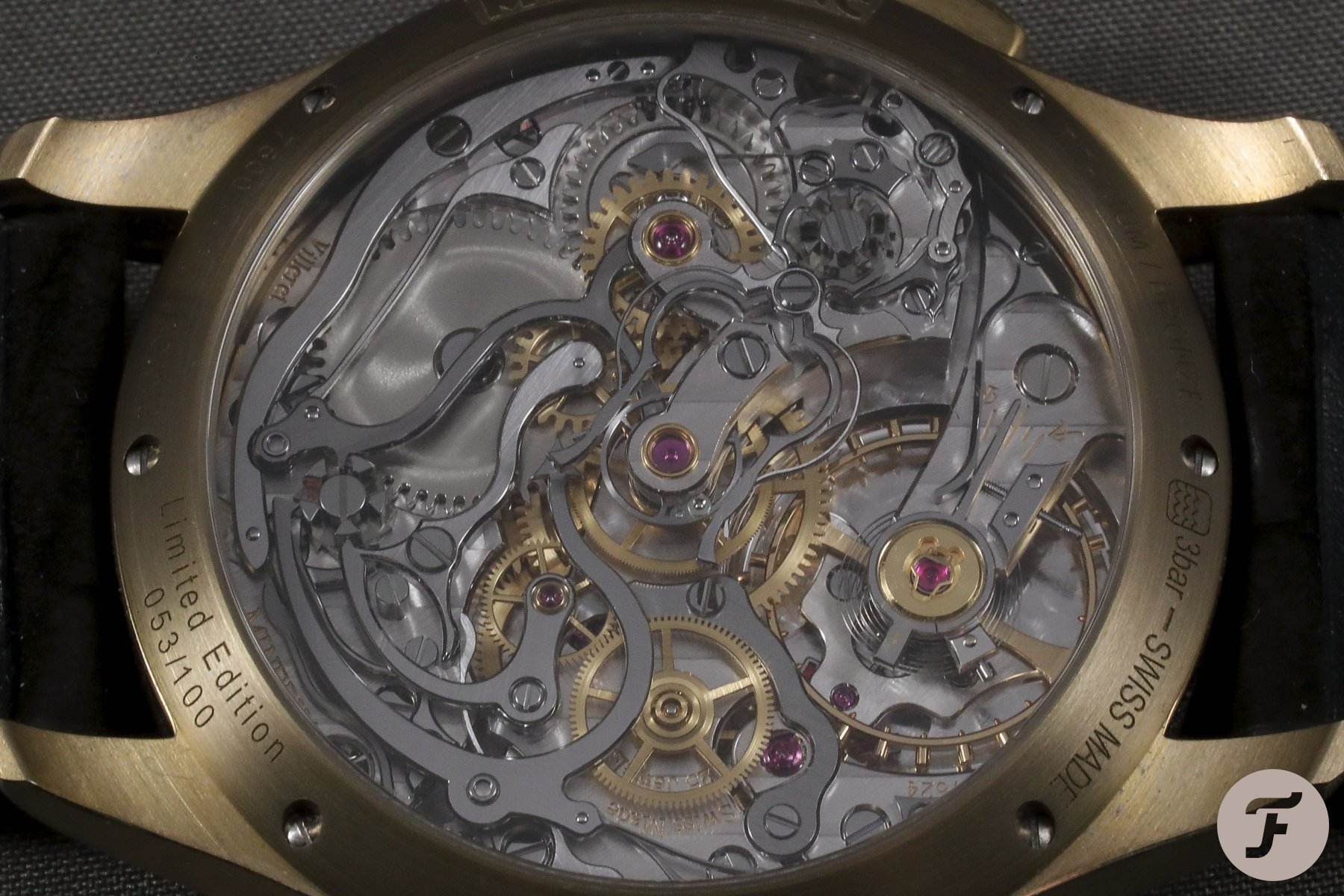
The movement
Here we are at the aspect this whole watch is about. Just look at the images of the M16.31. This is what a classic Rattrapante should look like. There is complexity, depth, and uncompromising finishing, all united in an overwhelmingly aesthetic design. The complexity strikes you at first sight. Looking at this movement from a flat angle reveals its depth and three-dimensionality.
A pincer-shaped mechanism that is the key element of a classic Rattrapante dominates the center of this movement. Slightly hidden below it you find the signature arrow indicating a Minerva movement. You can see three jewels held by gold chatons. A pair of column wheels control the split-second mechanism and the primary chronograph function exposes apparently different designs. Several individually and ornately shaped levers and springs complete the visual impact. The balance wheel is relatively big and carries 18 screws. When the movement is running, the relaxed ticking at 2.5 Hz (18,000vph) spreads a languorous vintage feeling.
Finishing
Let’s take a look at the different finishings on this movement. The classic wave patterns, often called Geneva Stripes, are only applied to the relatively small surfaces of cocks and bridges. They are most obvious on the split-second cock in the center of the movement and on the balance cock. The levers and the larger springs are brushed. The top of the crown wheel and the ratchet wheel show a subtle snailing. The bottom plate, which you can see below the balance, carries circular graining, also called Perlage. Around many screws, you can see polished sinks.
Below, you can see that the screw heads are black polished. Black polishing is an incredible mirror polish. It is so smooth that at certain angles, light is not reflected in the direction of the observer at all. This results in a deep black appearance. You can also see that the swan neck regulator is black polished to a stunning standard.
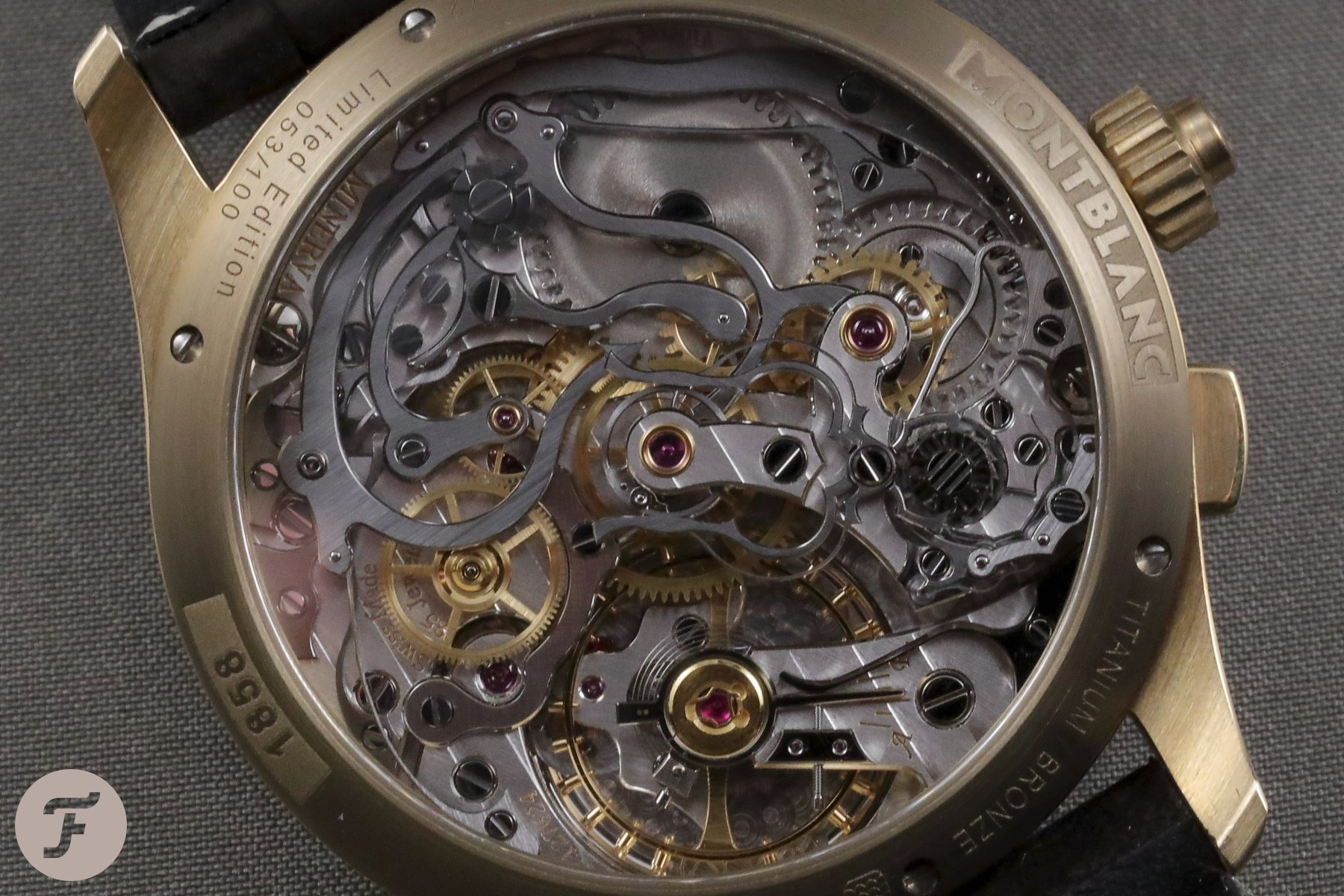
Sharp angles
This watch is a good example to pinpoint the difference between hand or automated (CNC) finishing. The first things to look at are the edges. Chamfering (also called Anglage) is a technique that sees edges filed at an angle. The aesthetic effect is stunning. These angled and polished edges catch the light beautifully. Watches finished by machines often have rounded edges. Automated machines are still not able to create accentuated sharp corners. Sharp angles are a sign of hand finishing.
At the M16.31 you find such sharp angles at many places. At the split-second cock in the center, there is an acute inward angle on one side behind the jewel chaton and three sharp outward angles close to the screw that holds this cock. Looking at the chronograph bridge below the split-second bridge, you will see a similar inward angle behind that chaton. The signature Minerva arrow alone has five sharp angles: Three at the tips of the arrow and two where the arrow connects to the lever. When you closely examine the pincer legs, you will discover a high number of sharp angles.
Special chamfering
There is something very special about the finishing seen on the split-second cock and the chronograph cock. There is not just a 45-degree bevel between the top and the side of the cock but a complete, polished arch reaching from the top side of these cocks to their bottom side, which is a clear sign for hand finishing.
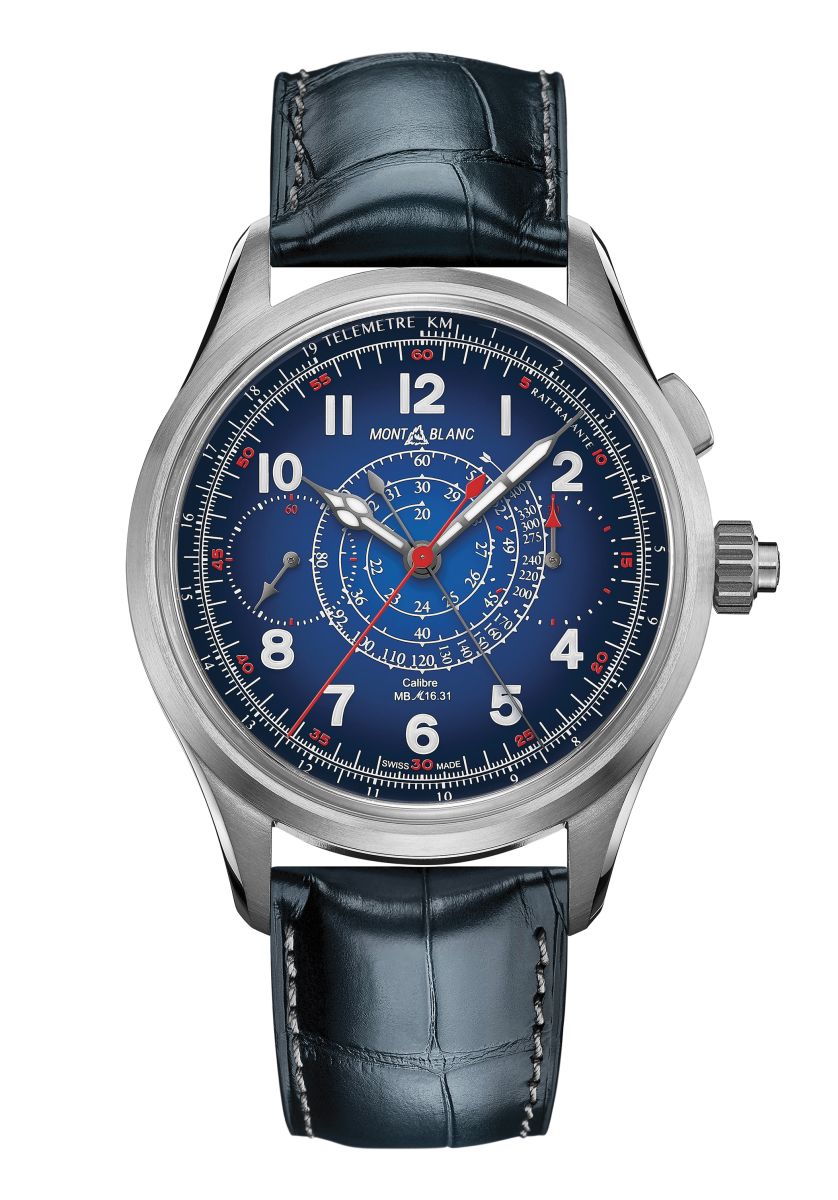
Limitation
There will only be 100 pieces of this watch. This is a small number considering that there are more than 500 Montblanc boutiques around the world plus a lot of retailers that offer this brand.
But Montblanc has created a few more of these watches. Montblanc’s contribution to the 2019 edition of the Only Watch auction was a version with a satin-finished titanium case and a smoked blue dial made of agate, a semi-precious stone. It fetched impressive CHF 100,000.
At the 2019 edition of SIAR (Salón Internacional Alta Relojería), a major watch fair for Latin America located in México, Montblanc presented a special edition 1858 Split Second Chronograph consisting of eight pieces with the same bronze case as the standard edition but a smoked green dial made of nephrite jade. This version cost €39,500 and was available at Montblanc Boutiques in Mexico only.
I think we will see more iterations of this model. Possibly also watches in a different design containing the same movement.
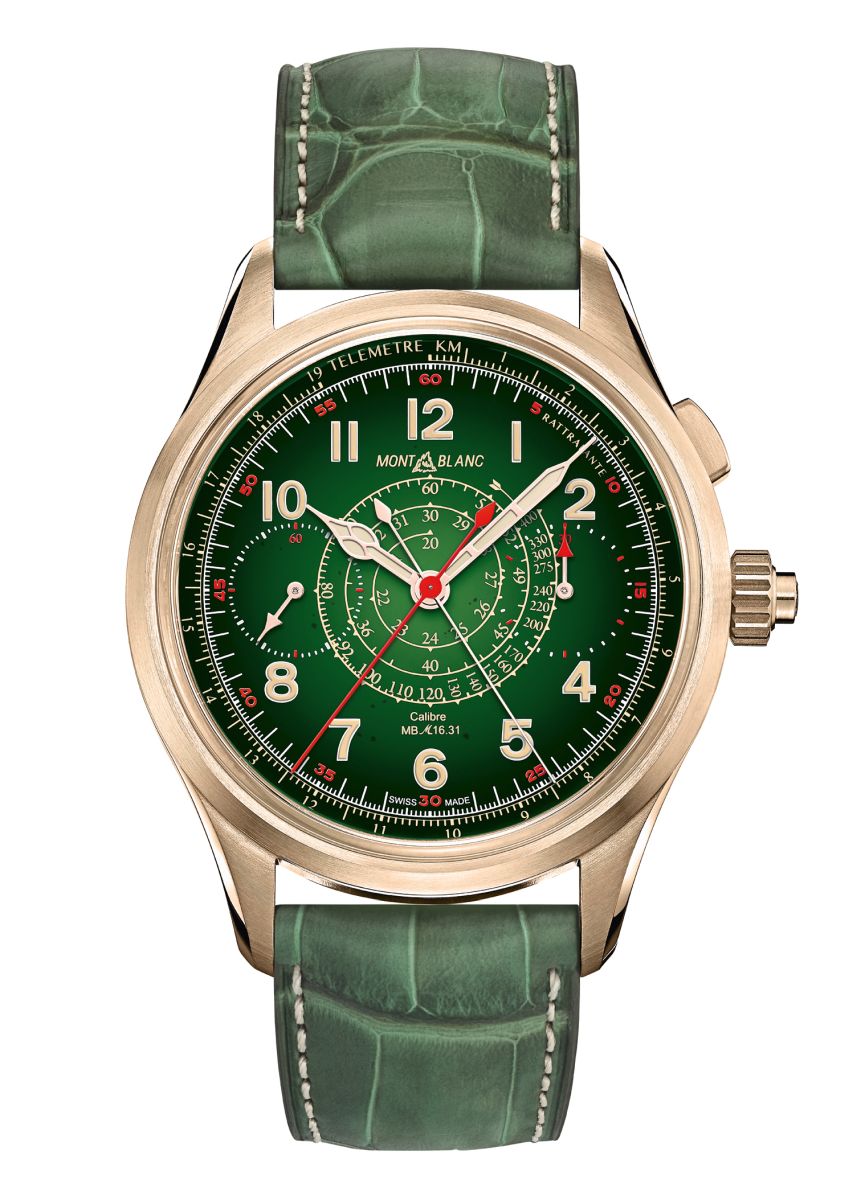
…and they lived happily ever after
So, has my journey to get hold of that seemingly unattainable dream come to an end? For the time being, oh, yes! For the time being? Well, you know, if in an unforeseen way the necessary funds would find their way to me, there would be Lange’s Double or Triple Split…
I like this watch (that might be a bit understated). It is bold but not flashy. Montblanc offers the 1858 Split Second Chronograph at a price that actually is impossible for this type of watch. We have seen similar disruptions in the recent past. Remember the reactions when TAG Heuer dared to present a Tourbillon Chronograph, actually a Grand Complication, for 15,000. There are some indications that the economic downturn of the watch industry could find its end in the near future. But still many brands seriously try to offer value for money (relatively speaking). Let’s see which value propositions this watch year will bring us.
Does the release of this watch mean that other split-second chronographs lose their value? Definitely not. But it should make you aware of what you can expect at a certain price level. This watch and its price show you what such a watch needs to cost without ruining a brand.
To find out more about Montblanc’s watches head for their website.
